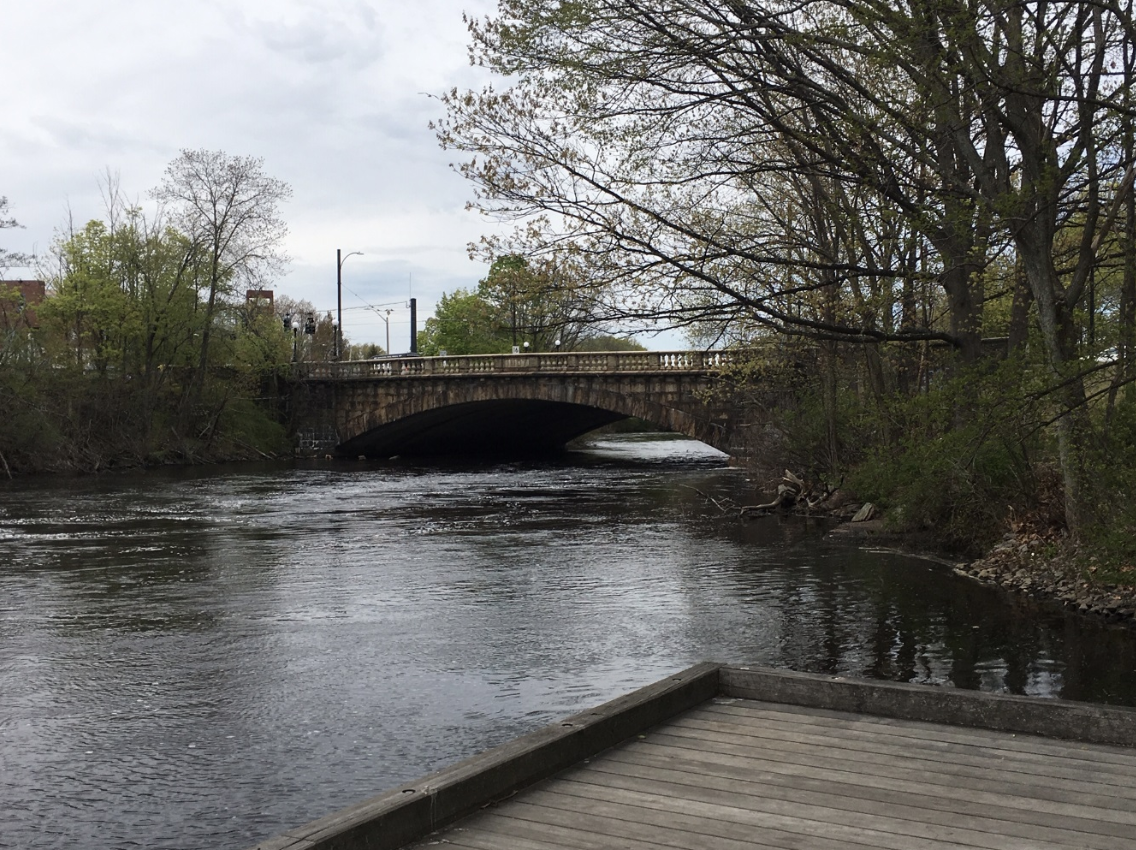A self-guided tour of Watertown’s stormwater drainage system will show people how rain water gets from the streets to the Charles River.
The walk features some of the stormwater devices you can see on the street that you would recognize, such as a catch basin, and some that are not as obvious, like a bioswale. There are also parts of the stormwater system where the water enters the river.
The Watertown Department of Public Works collaborated with the Mystic River Watershed Association to create the tour, said Town Engineer Matthew Shuman.
“Here’s some great activities we put together with the Mystic River Watershed Association for kids and adults to do to get some fresh air during these trying times … go for a stormwater walk,” Shuman said.
See the guided walk below:
Looking to head outside? Go for a stormwater walk!
Looking for an outdoor activity with your kids? Check out this stormwater walk you can do right outside your door, put together by the Mystic River Watershed Association: https://mysticriver.org/new-blog-1/2020/4/27/4-stormwater.
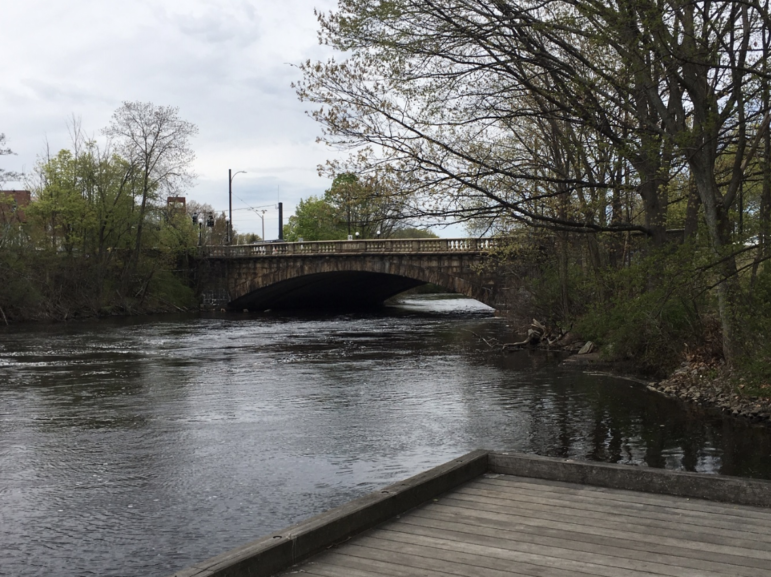
There are over 3,700 storm drains (also called catch basins) in Watertown so you are bound to see one in your neighborhood. Most of our catch basins take stormwater (and everything else that gets in it) to the Charles River, but there are a few that go all the way to the Mystic River! Some of the storm drains in Town have markers that say “drains to river.” Do the ones in your neighborhood have markers? Even if they don’t, they still drain to the river.
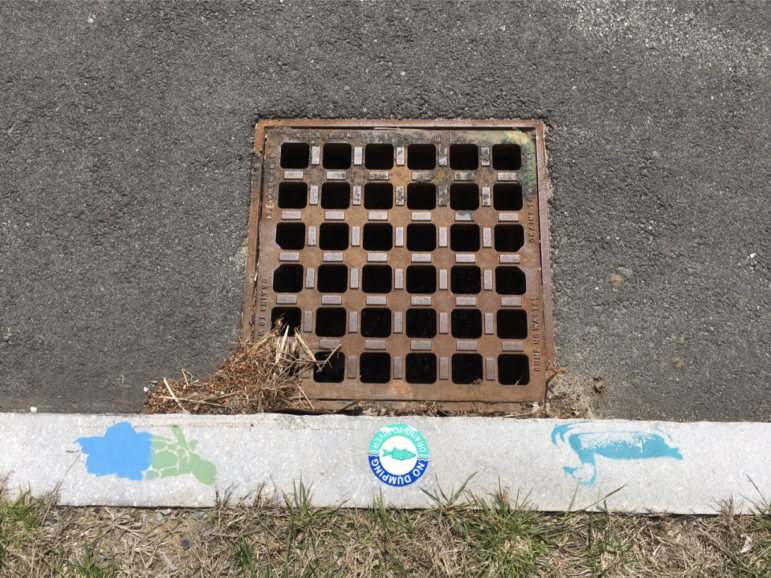
Do you like to walk along the Charles River paths? The next time you are out, see if you can find a storm drain outfall. Storm drain outfalls are pipes located near the river where our stormwater and drainage enter into the river. We have over 30 storm drain outfall in Watertown that empty into the Charles River. Can you find one? They all have signs.
Here’s a picture of Outfall 12 which is near Watertown Landing in Watertown Square. Can you see the pipe going into the river? Is it round or rectangular or different shape? Is it over the water or underwater? Is the pipe flowing? After it rains you will see water coming out of the pipes. On a dry day most of our stormwater outfalls will be dry, but some of the larger ones flow even on a dry day. If the pipe is flowing, what does the flow look like? Is it fast or slow? Is it cloudy or clear?
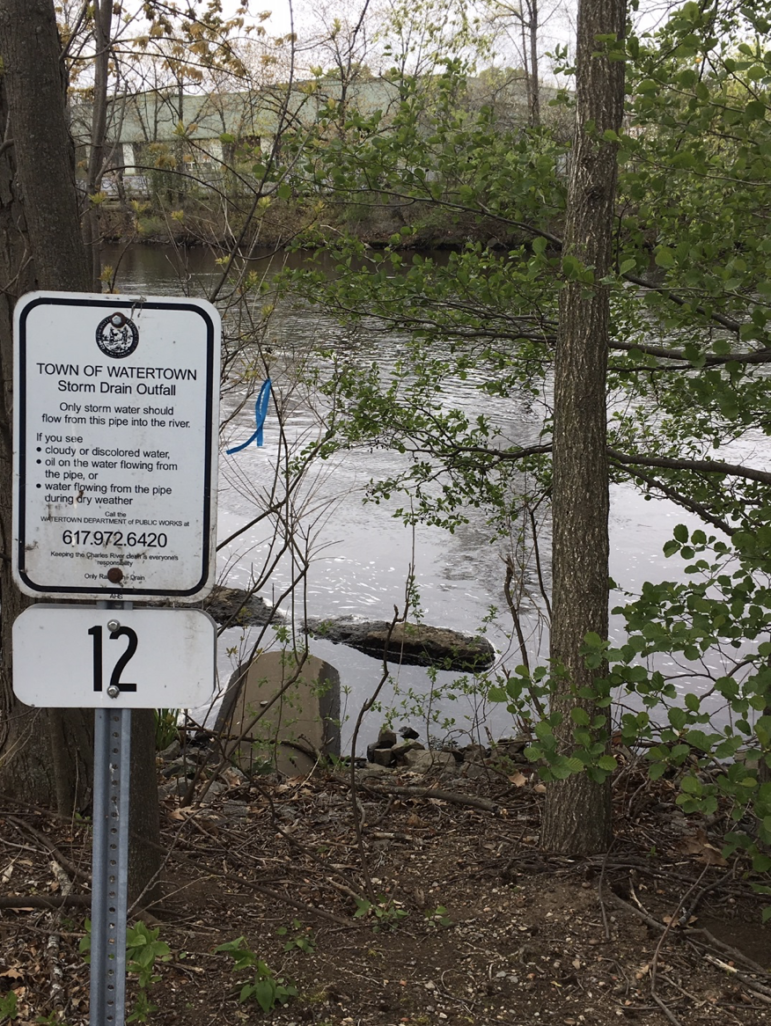
Do you see foam or bubbles in the river or at an outfall? This foam can either be natural or unnatural, but most of the time, foam is natural and not harmful.
When organic substances, such as leave and twigs, fall into water and begin to decay, they release compounds known as surfactants. These allow air to more easily mix with the water and create bubbles. These bubbles are what make up natural foam. Not all foam is natural, however. Unnatural foam can be caused by man-made products, such as detergents. Unnatural foam can look similar to natural foam and may be harmful to aquatic life.
Is there a white or yellowish substance on the surface of the river? This is most likely pollen. The color shade of pollen can vary from white to yellow to green. During the spring and summer months, it is common to see either a coat or blotches of pollen on the surface of waterbodies. This is caused by fallen pollen grains from nearby trees and plants floating on the surface of the water. Pollen can sometimes be mistaken with algae, too. The main difference between the two is that pollen floats on top of water, while algae can also be stuck to other surfaces below and around the waterbody.
Unlike our sewers, which go to the Deer Island sewer treatment plant, almost all of the Town’s storm drains and outfalls go to the river without treatment. But new technologies are being developed to treat stormwater. Some of them are below the ground where you can’t see them, but some of them are above ground.
Take a trip to Edenfield Ave. to see some bioswales. Bioswales use natural materials to filter stormwater to remove pollutants and help it be absorbed into the ground instead of going into our storm drains. The bioswales are located in the normal planting strip area between the curb and the sidewalk. How do the bioswales look different than a regular planting strip? If you go for a walk when it rains, what do you see? Is any of the stormwater going into the bioswales? Is any of it leaving the bioswales? Are any of the bioswales holding water? Don’t want to get wet? Take a look at the video tape! https://www.youtube.com/watch?v=_D8srjyaIJk&feature=emb_title
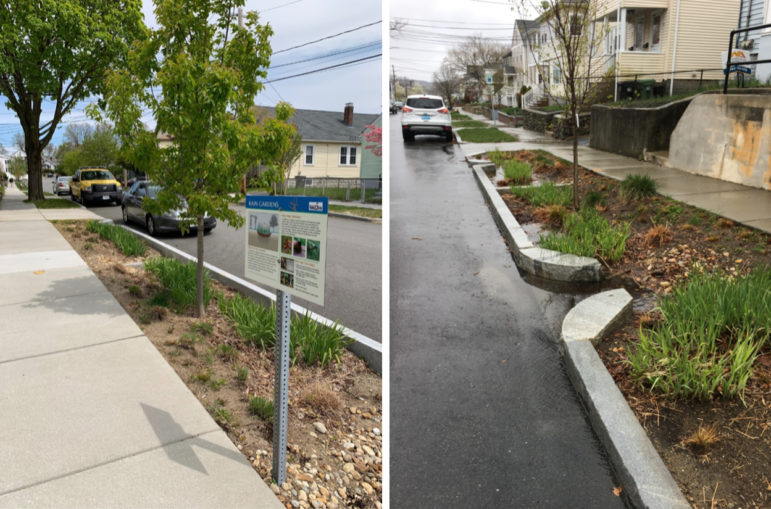
For additional information:
Watertown Stormwater Web-page: http://www.watertowndpw.org/161/Stormwater-Management
Watertown’s Rain Drain Pain: http://www.watertowndpw.org/DocumentCenter/View/154/Watertown-Stormwater-Flyer-PDF?bidId=
Watertown’s Stormwater Advisory Committee: https://www.ci.watertown.ma.us/451/Stormwater-Advisory-Committee
Charles River Watershed Association: https://www.crwa.org/
Mystic River Watershed Association: https://mysticriver.org/
